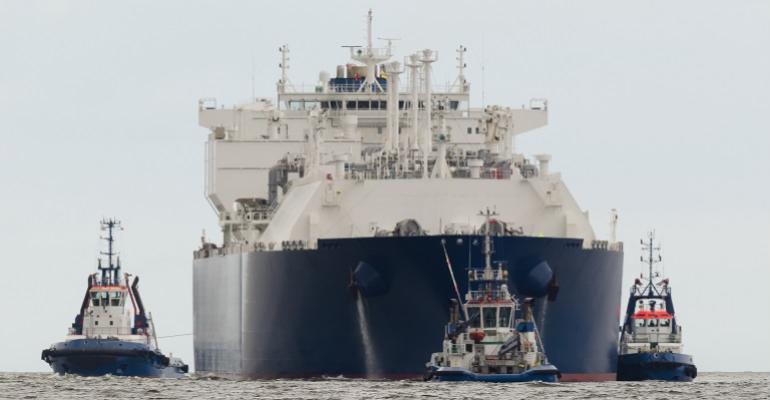This is great news for LNG producers, particularly those with major expansion projects underway. These are evident in various locations, with the US heading the leaderboard. However, Qatar’s giant North Field Expansion project, involving a new annual export capacity of close to 47 million tonnes, is in second place.
These projects, Qatar’s North Field in particular, have significant implications for LNG carrier operators because much of the production will be liquefied and shipped long distances by sea. The sector, therefore, is likely to continue on its growth trajectory, absorbing today’s record order book and probably driving demand for more ships tomorrow.
Volatile spot rates for LNG carriers rose and fell dramatically over 2022, with some ships fixed at rates of more than $400,000 a day during quarter four. They remained much lower over the first half of this year but have climbed again since June. Mid-August spot market indications for a 160,000cu mtr dual-fuel, diesel-electric carrier indicated rates close to $100,000 a day, more than double the levels prevailing earlier in the year.
The outlook for the sector indicates a period of strong growth. Seaborne LNG is now significantly more important in the global energy mix and projects under development have led to record contracting levels and an orderbook of more than 330 ships, equivalent to about 52% of the operational fleet today.
As a result, the relatively small number of specialised yards capable of building these sophisticated ships are full for years to come. Reported contracts recently have involved vessels which will not deliver until 2028. Newbuilding prices have risen sharply, with a standard 174,000cu mtr unit now costing more than $260 million, up from around $190 million at the beginning of 2021.
Clarksons Research identifies rising Asian demand and the importance of LNG in the energy transition as two key factors underpinning continued LNG sector expansion. The analysts expect that much of the trade in Russian gas to Europe by pipeline will be replaced by seaborne LNG, with the potential for global trade to reach 650 million tonnes by 2030, up from an expected 416 million tonnes this year.
Over this timescale, Qatar’s dramatic North Field expansion will play an important role. The Gulf state’s exports are likely to remain flat this year and next, experts say. Liquefaction capacity there has remained constant with utilisation at close to 100% since the most recent liquefaction plant was commissioned in 2011.
However, a sharp rise in exports is expected in 2025-26 as the next phases of North Field expansion come on stream. Trains one to four of the project are expected to boost LNG exports by more than 31 million tonnes a year, creating demand for more than 30 ships of standard 174,000cu mtr size.
Beyond that, Train 5 is currently at the front-end engineering design (FEED) stage. Expected to come on stream in 2027, this will involve an additional annual export capacity of close to eight million tonnes and provide likely employment for a further nine ships.
In 2028, the final Train 6 of the North Field expansion is due on stream although this phase is also at the FEED stage. This will make approximately the same volume of gas available for export and is likely to boost vessel demand by another ten ships.
Experts say that the final two Trains, though still at the FEED stage, will take the country’s total liquefaction capacity to around 124 million tonnes per annum. QatarEnergy is believed to have signed sale and purchase agreements relating to this gas and final investment decisions are likely later this year or next.
Copyright © 2024. All rights reserved. Seatrade, a trading name of Informa Markets (UK) Limited.
Add Seatrade Maritime News to your Google News feed.  |

